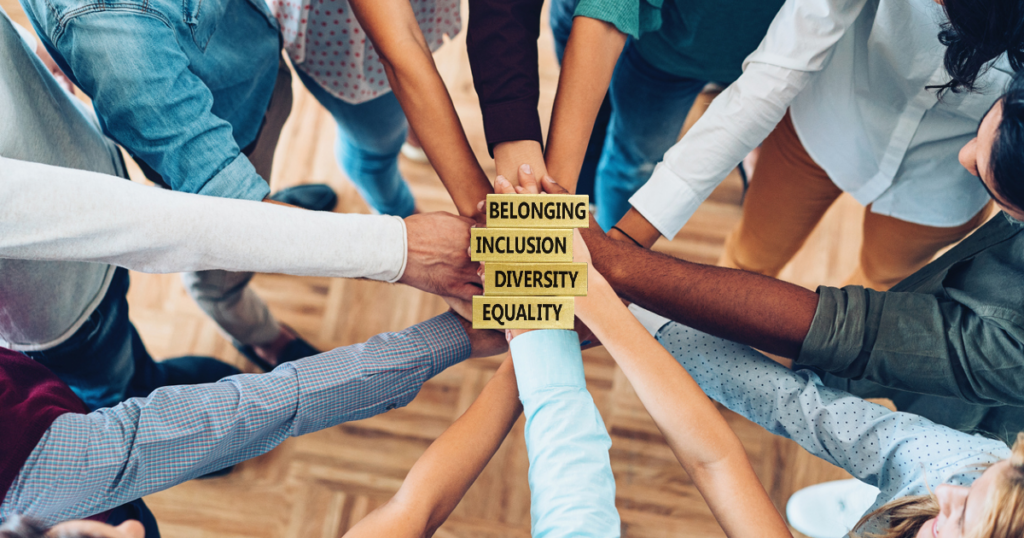
‘We're all in this together
And it shows
When we stand
Hand in hand’
– High School Musical
You’ve probably heard or sang that song, and yet when it comes to our work, it doesn't seem the same way like in work-related movies. Search the phrase 'office discrimination' on Twitter and there would be an abundance of Twitter users sharing their horrid experiences of persecution based on gender, race, and/or religion.
It was once thought that these discriminatory practices were well past its heyday, but these things can and do still exist subtly in office premises all over the globe.
It may be in the form of an unwelcomed joke about one's race, or an uninvited compliment to a woman which may just be bordering on an incident of sexual harassment.
The thing is, while companies chase their employees for things like hard work and even more time, incidents such as the above aren't only offensive, but can affect their motivation. It's not all bad news though, especially given that companies can take steps to ensure their workplace(s) is a safe space for people from all walks of life.
With the rise of social media, discourse over topics like ethnicity and gender issues have taken centre stage, with buzz words such as 'inclusivity and diversity' used interchangeably. But if you're in human resources looking to rid your office of discrimination and prejudice, it's best to know the difference between these two terms.
Starting with diversity, in the context of the office, this would mean creating a space featuring employees with various backgrounds that could include race/ethnicity and gender/sexual minorities, and even those who may be physically or mentally challenged.

But accepting talent from all walks of life is only the first step. You wouldn't want a diverse office where those from minority groups don't feel safe. This is where inclusion comes in. Basically, these would be instances where minorities feel included in the office. Inclusivity allows for everyone to be involved, to voice their opinion, and to be heard. That counts now, more than ever.
Dr. Robert Sellers, chief diversity officer at the University of Michigan, explains it succinctly: “Diversity is where everyone is invited to the party; equity means that everyone gets to contribute to the playlist; and inclusion means that everyone has the opportunity to dance.”
In essence, if you don’t include people, even diverse groups, that just results in a toxic work environment. Groups of the same race, class, or minority will usually stick together, so any move for creativity, innovation, or even progress would be hampered.
Read more: High Employee Turnover: 10 Toxic Workplace Issues That Cause It, And How To Manage Them
Companies tend to assume that if the diversity problem is solved, that’s done and dusted. However, that's only one half of the whole; inclusion is the key piece that makes diversity stand out.
Diversity and inclusion are one of the most important aspects to keep and maintain a healthy workplace.
A study done by Cloverpop has found that a direct link exists between inclusivity and business performance. Researchers noticed that when diverse groups make or execute a business decision, the end result was much better compared to individual decisions.

Geographically diverse teams of different genders, and age differences of at least 20 years and older, had an 87% chance of making better business decisions than mere individuals.
A Deloitte study in Australia found that employees across the organisation are more likely to demonstrate a higher level of involvement, attendance, and achievement if presented with an equal focus on diversity and inclusion. Employees who feel comfortable, valued, and respected in the workplace are motivated to continue contributing to the company's continued success.
A diverse and integrated team benefits customers, not just internally. The employees have the same background as the target audience, so they can effectively promote the company too.
Simply put, diversity and inclusiveness are good for both the global economy and business.
“Let’s get together and feel alright.”
– Bob Marley
It's not easy trying to make everyone feel like they're part of the group, or to get everyone on the same page when it comes to inclusivity.
Communication barriers are one of the biggest obstacles faced by all companies. Even if people use the same language, such as English, different slangs and accents from different countries can be misleading. Working in a very diverse organisation would thus require strong interpersonal skills and cultural sensitivity.

Another issue that can arise while trying to include all your co-workers is race-based mistrust. If a manager makes it clear from his words and conduct that race-based favouritism is shown, people from minority groups could feel like they're treated unfairly compared to the majority.
Consequently, these groups would barely raise their voices when encountering problems. For instance, employees from some Asian countries may shy away from voicing out their opinions, particularly the new hires, probationary staff, and those in junior roles. This is where the manager must shine by going the extra mile to prompt, encourage, listen, and act on these employees' dissatisfaction.
Misunderstandings can also occur when connecting people from different cultures. For example, in some cultures, it's considered inappropriate to raise your thumb, signal "OK", or give an outward-facing V sign.
Although many organisations have increased their focus on diversity, equity, and inclusion in recent years, there's still much opportunity for improvement. Hiring people from different backgrounds and encouraging supportive initiatives are just the beginning. Diversity, equity, and inclusion go hand-in-hand, and companies must create a truly comprehensive work culture to see any substantial change.
Here are some tips and effective actions to help managers and HR leaders build and improve on their existing inclusivity and diversity efforts, or develop new ones for the first time:
Managers must level the playing field, and provide each employee with an equal chance. Certain types of analytics can be used to determine which employees are undercompensated/overcompensated for identical tasks or duties. People analytics, for example, can assist managers in identifying any wage disparities within their teams, and leaders can examine patterns across departments to get to the bottom of underlying issues. With equality being the focus of today’s society, you want to make sure ALL your staff are paid equally and sufficiently.

Employees that receive diversity training would learn how cultural variations can affect how people operate and interact at work. It might range from communication techniques, to self-identity and conflict resolution. Do note that diversity training that's made optional is more successful than training that's made necessary.
Companies should also focus on courses that are relevant to their organisation and employees, as well as training that connects with their wider diversity, equity, and inclusion efforts and issues. In addition to utilising internal resources, engaging with a consultant can assist leaders in developing tailored training programmes for the entire organisation, as well as for specialised functions.
Leaders must clearly communicate why training is taking place, the problems they're trying to solve, and the next steps forward. This will help workers stay engaged, and understand how the lessons relate to the company's overall goals.
Being aware of, and acknowledging, a range of upcoming religious and cultural holidays is one method to increase diversity awareness and encourage greater tolerance. If the audience isn't too huge, ask how people plan to celebrate their respective holidays at the end of a team call or meeting. Use your company's online platform to educate staff about multicultural religious and holiday festivities, and to keep track of them.
When scheduling meetings, it's important to remember that individual employees have different demands that may necessitate flexibility. With that being said, time-off should be afforded to employees who wish to celebrate their cultural holiday.
Employers must also evaluate areas of the business where discrimination may exist. The way an internal issue is handled, for example, has a crucial influence in perpetuating existing difficulties. Poor interpersonal interactions are a major reason why employees leave a business.

Employers can address and replace unfavourable processes or interactions with more positive ones if they begin to rethink their rules. Leaders must first identify whether existing rules permit or sustain workplace discrimination such as racism or sexism, and then change them to create a fairer environment. Remember: Policies live beyond people!
Working from home (WFH) and Covid-19 are recent examples. WFH has long been regarded as a benefit associated with flexibility. However, after many months of remote working in crisis mode and rapidly changing conditions, the current definition of workplace flexibility, as well as the policies that enable it, are in need of revision.
Whether on-site, in the office, or working from home, true workplace flexibility should give every employee the opportunity to work fairly and equitably. Providing flexibility for all employees contributes to a more equal and inclusive culture throughout the company.
Diversity and inclusion initiatives don't happen immediately. Making structural changes to workforce strategies and procedures can take months, especially as companies face new obstacles in hiring and managing their employees. Because a cultural shift takes time, businesses must set goals and measure their progress to see how well their efforts are working. This will not only show leaders which methods are working and which aren't, but it will also hold them accountable for achieving their long-term objectives.
Organisations should encourage employees to provide feedback in order to gain a better picture of what's going on behind the scenes. Pulse surveys distributed throughout the workforce will provide leaders with the data they need to make better decisions, and minimise or eliminate discrimination and biases within a specific branch or section of the organisation, for example.
Employee pulse surveys can assist in developing a case for taking immediate action on smaller, more pressing concerns, while also informing long-term objectives. Employees can use engagement and check-in tools to foster conversations and transparently share how they're feeling, which HR leaders and managers should support.

Effective inclusion and diversity plans will help businesses better support employees, build a fantastic culture, and grow together as a company. Staff will be more engaged as they arrive at work every day (whether in person or virtually) feeling safe, connected, and acknowledged.
Most significantly, businesses must understand that diversity, equity, and inclusion are not optional or "nice-to-haves'' – they're a necessity!
“Diversity and inclusion, which are the real grounds for creativity, must remain at the centre of what we do.” - Marco Bizzarri